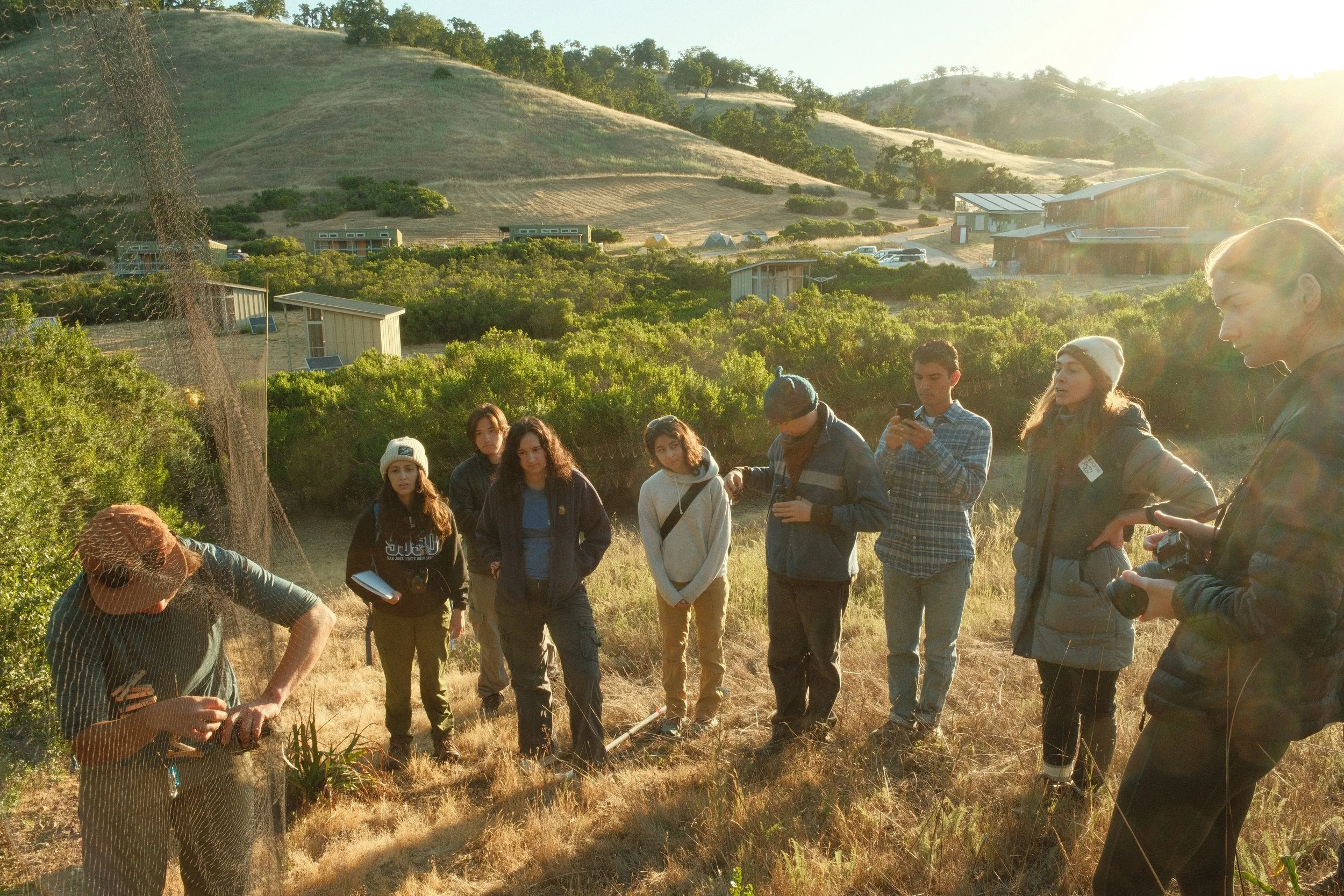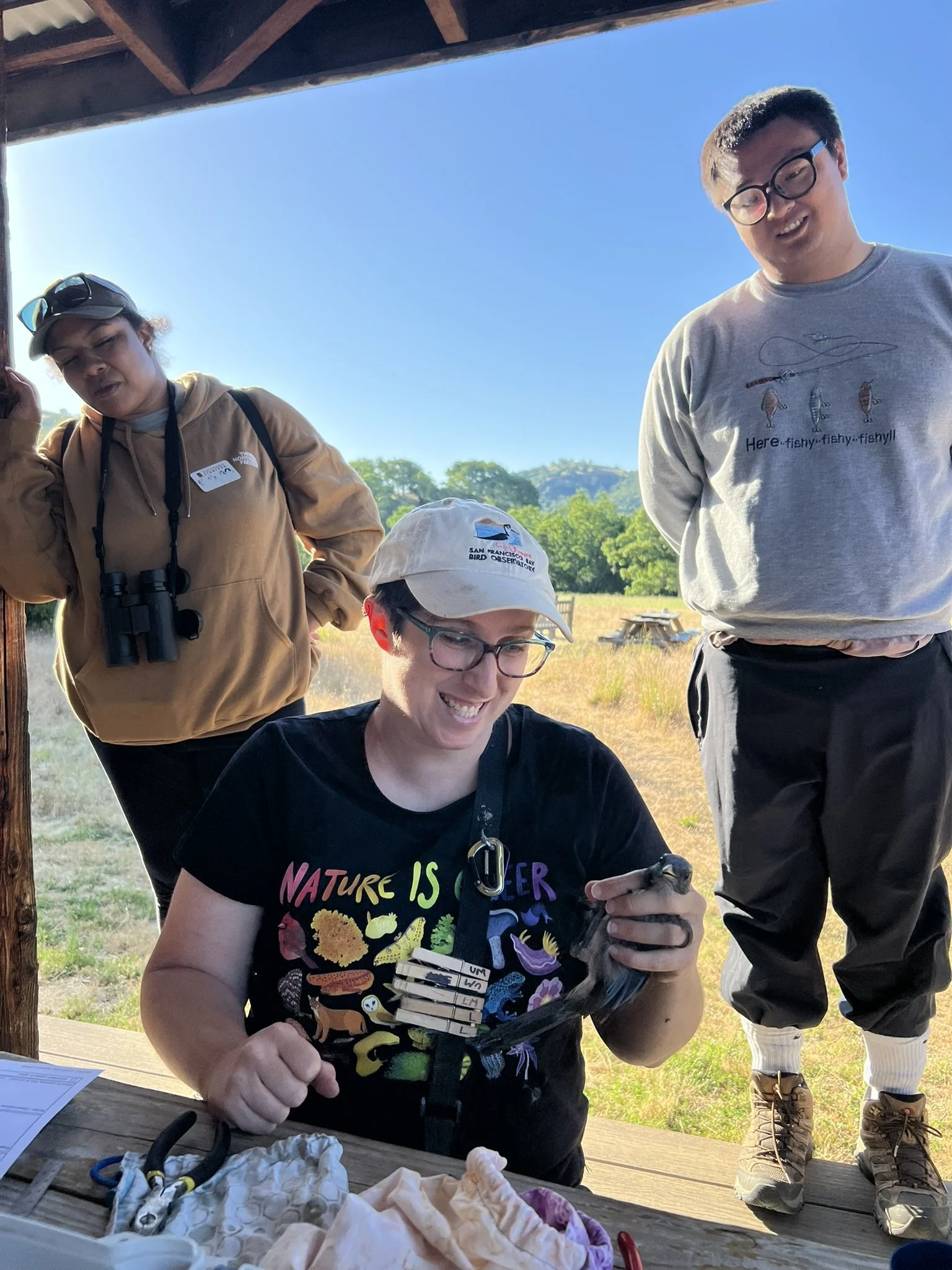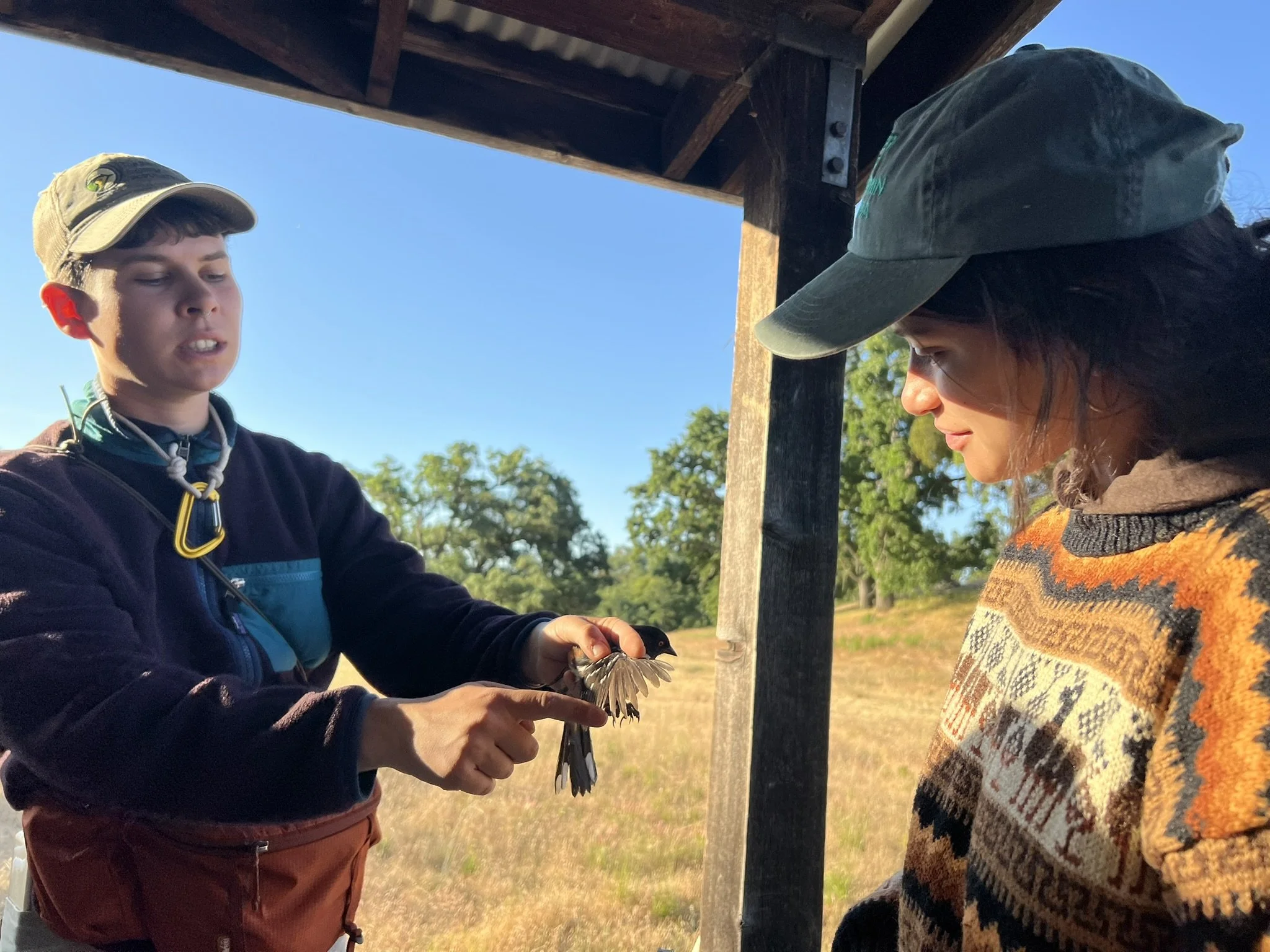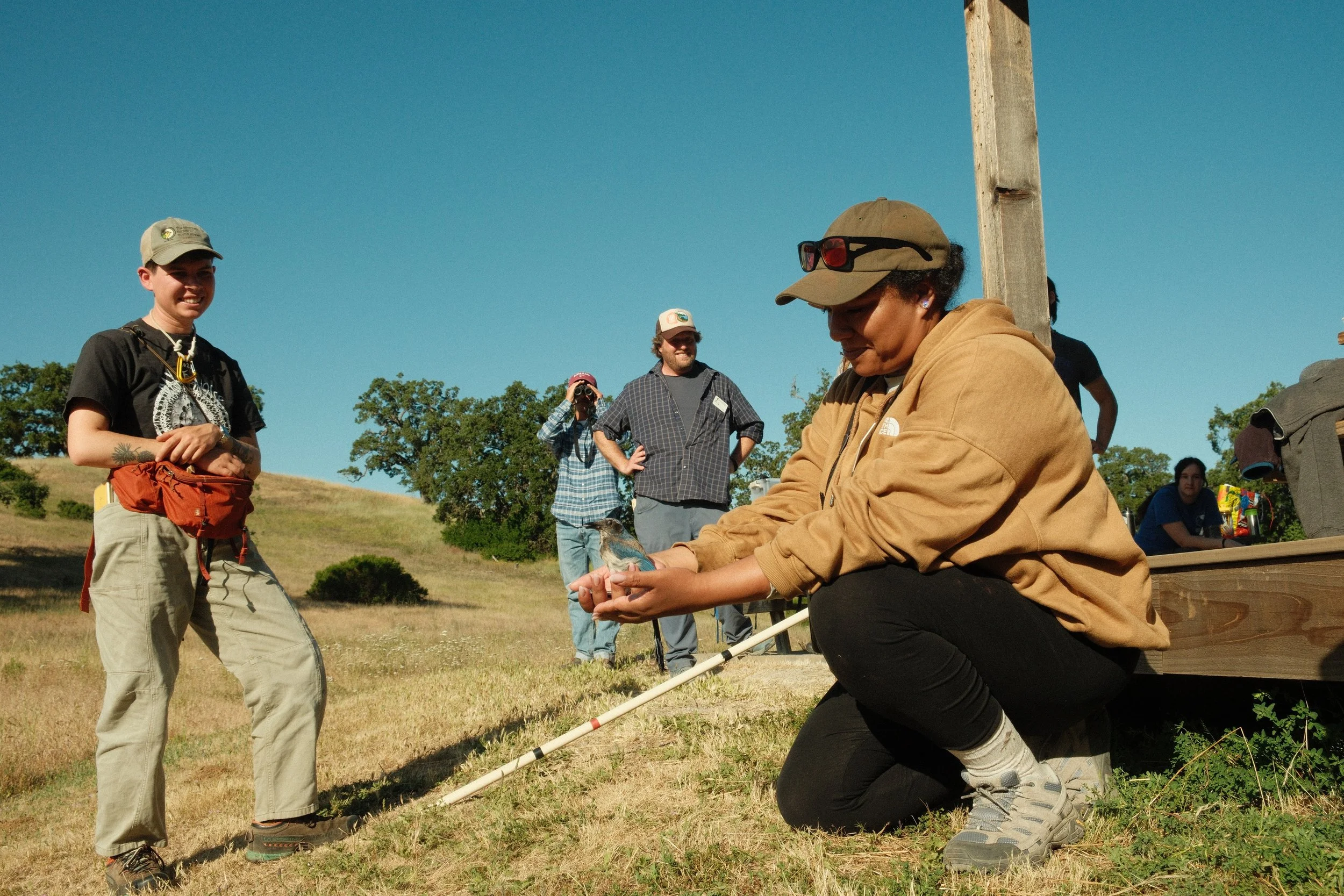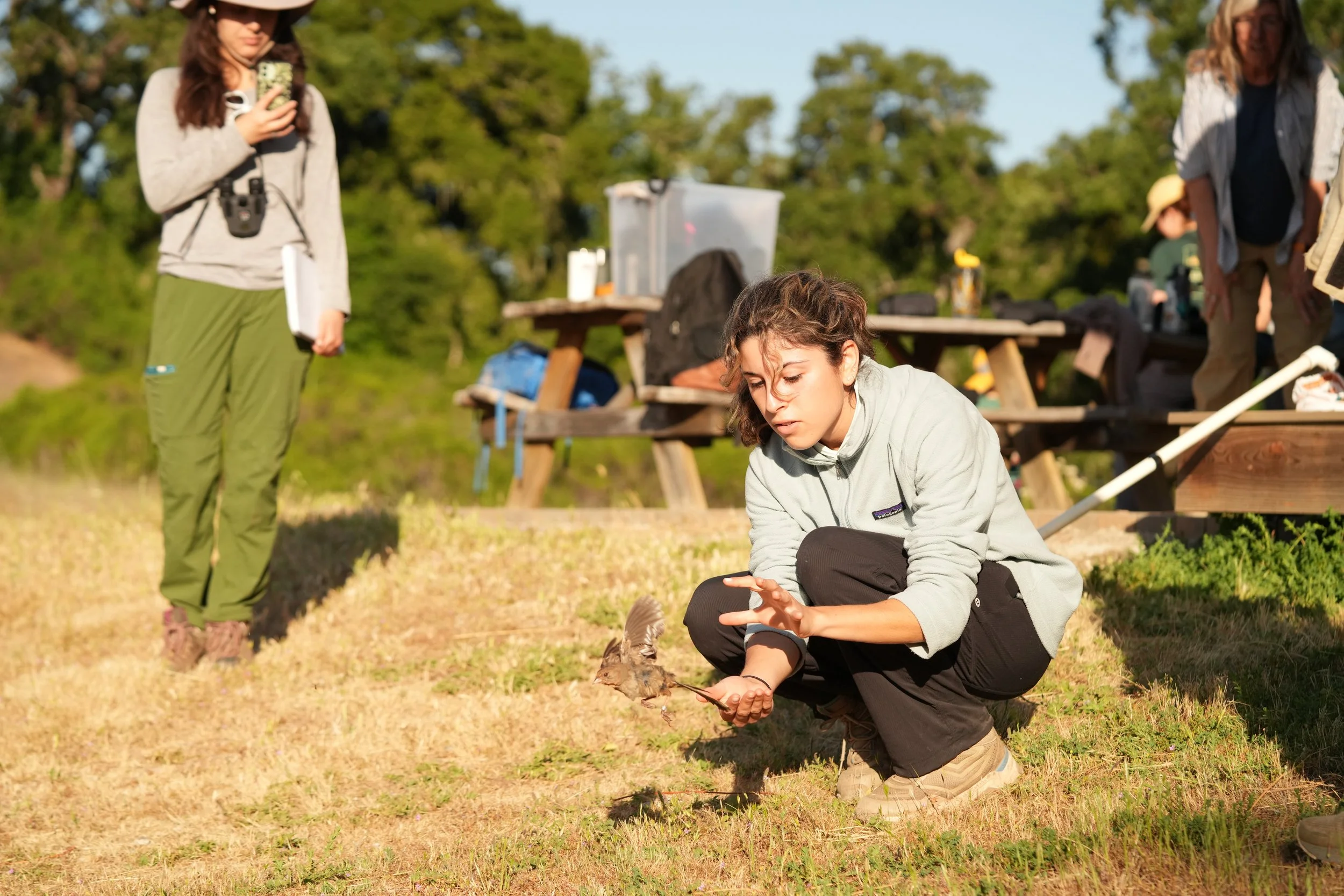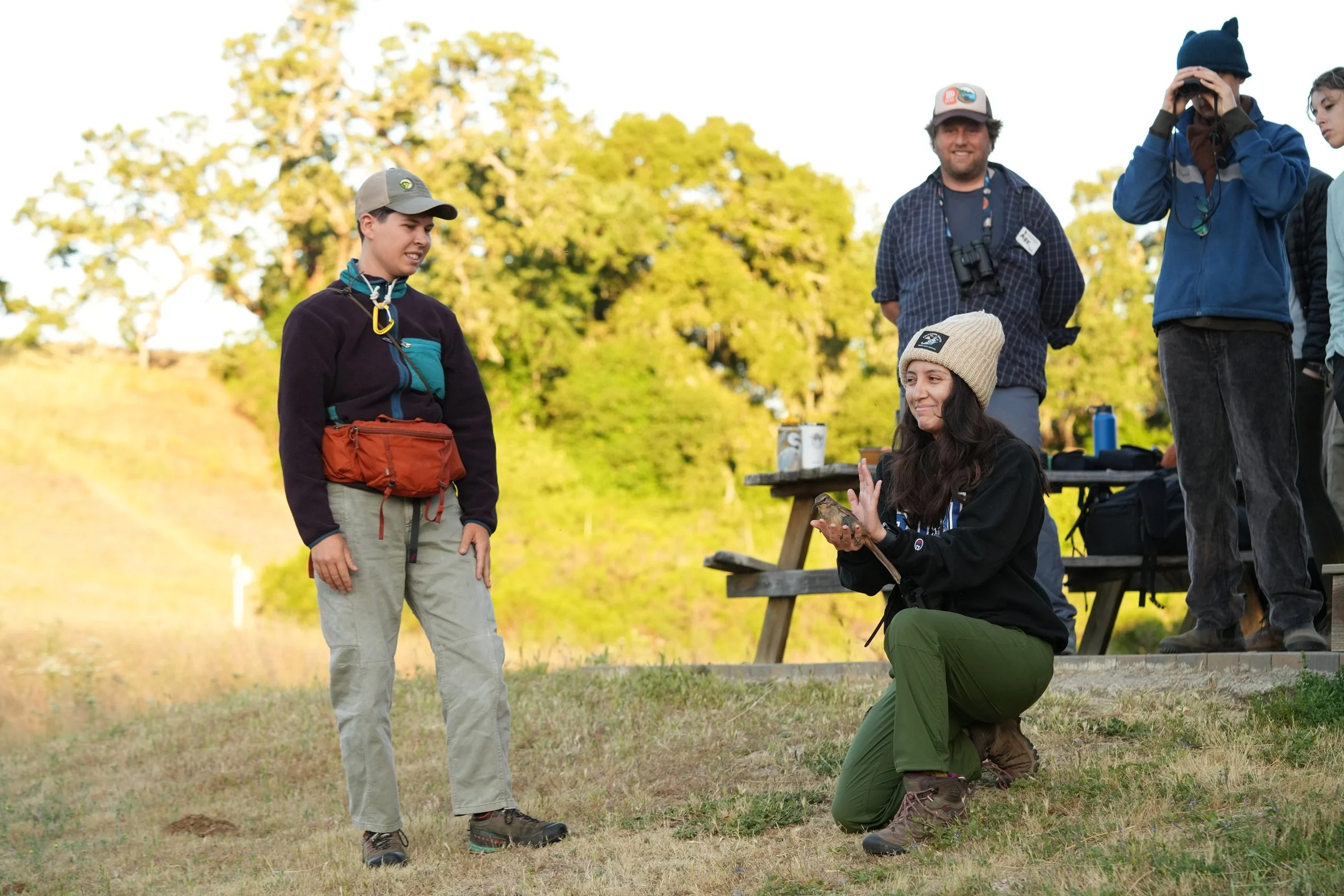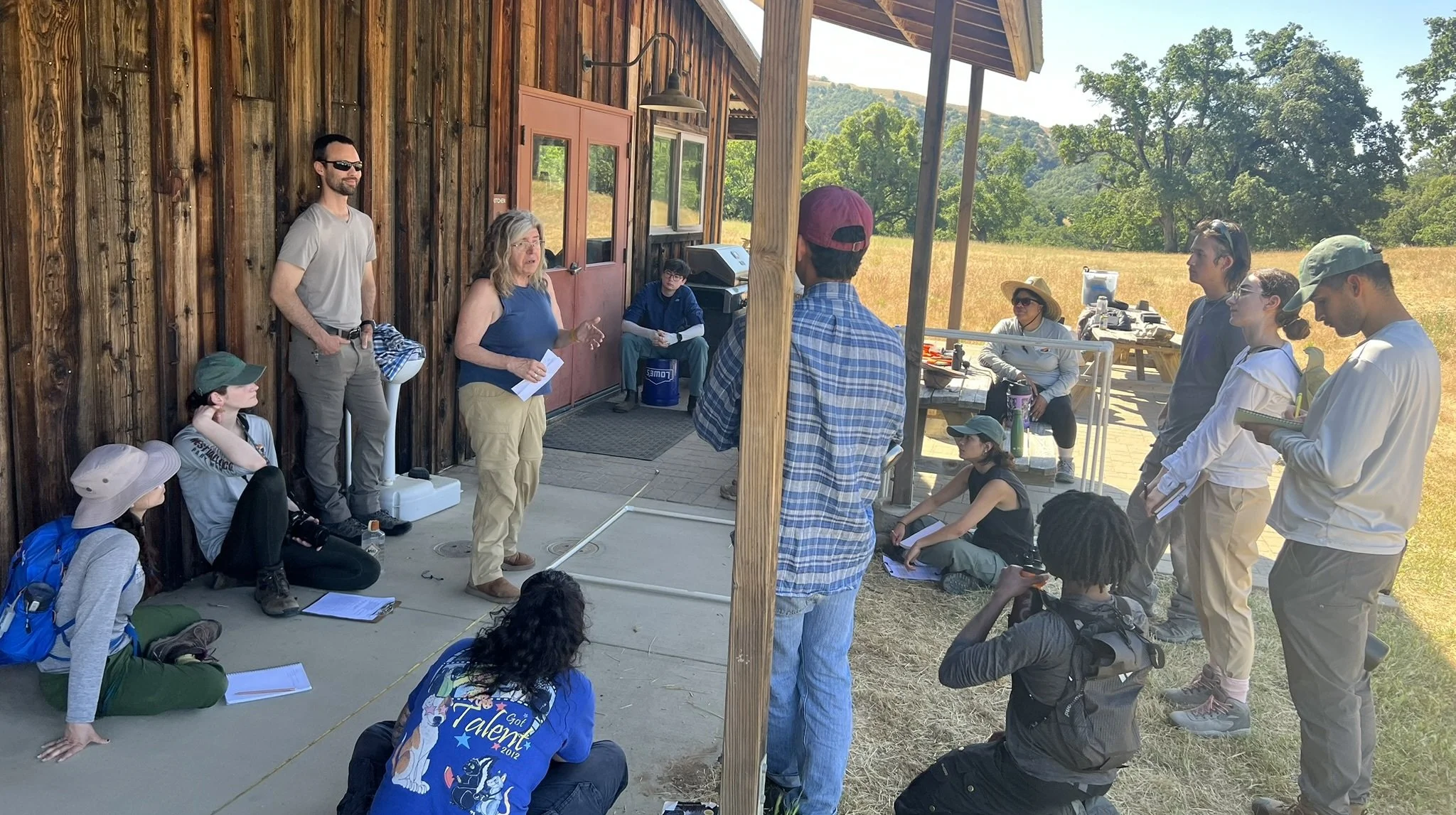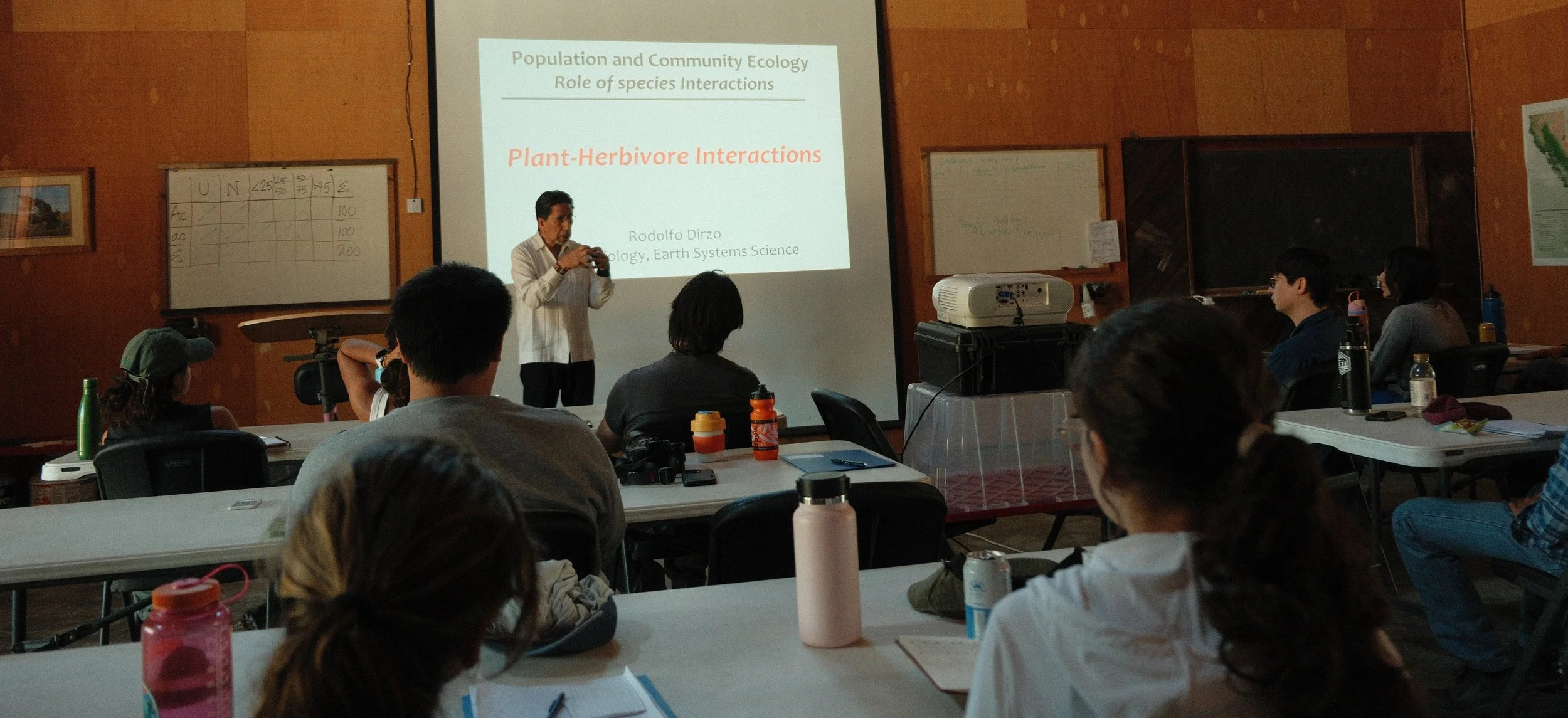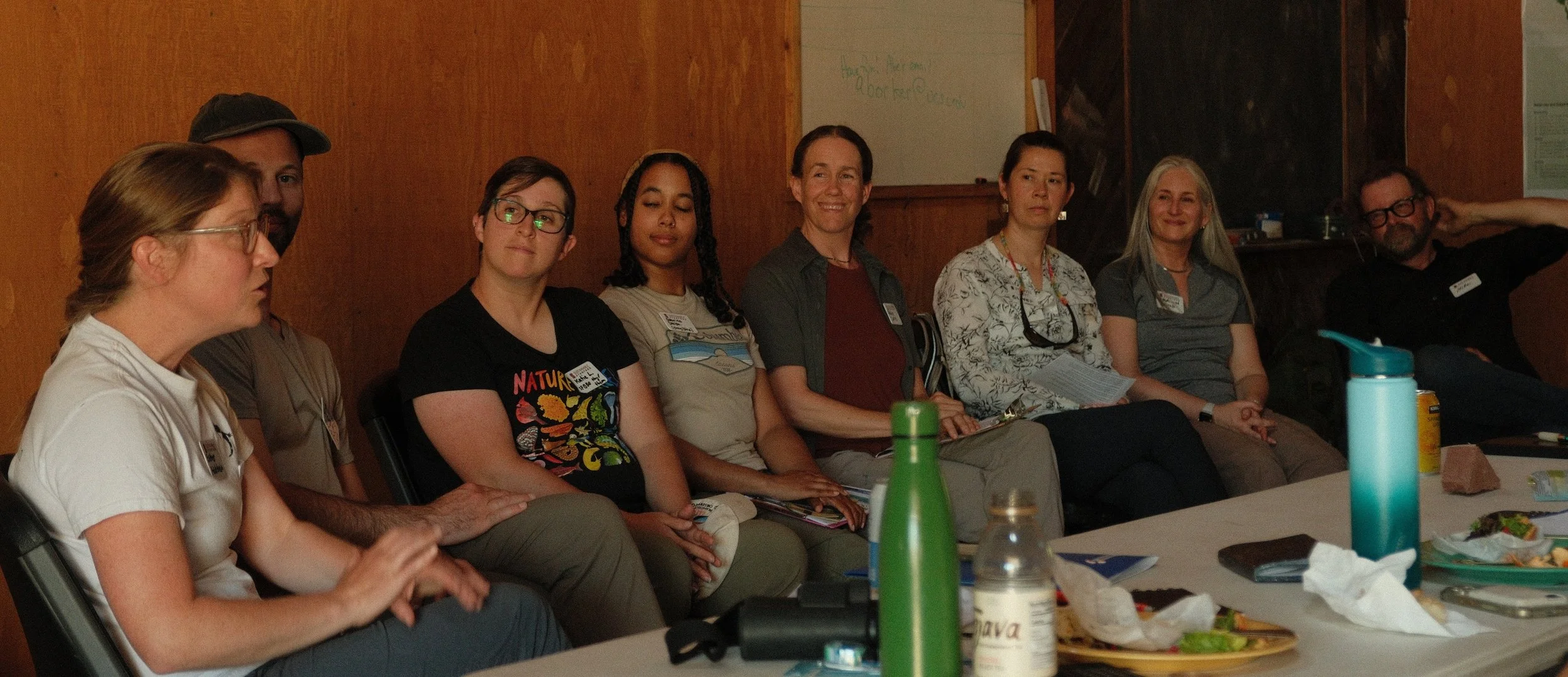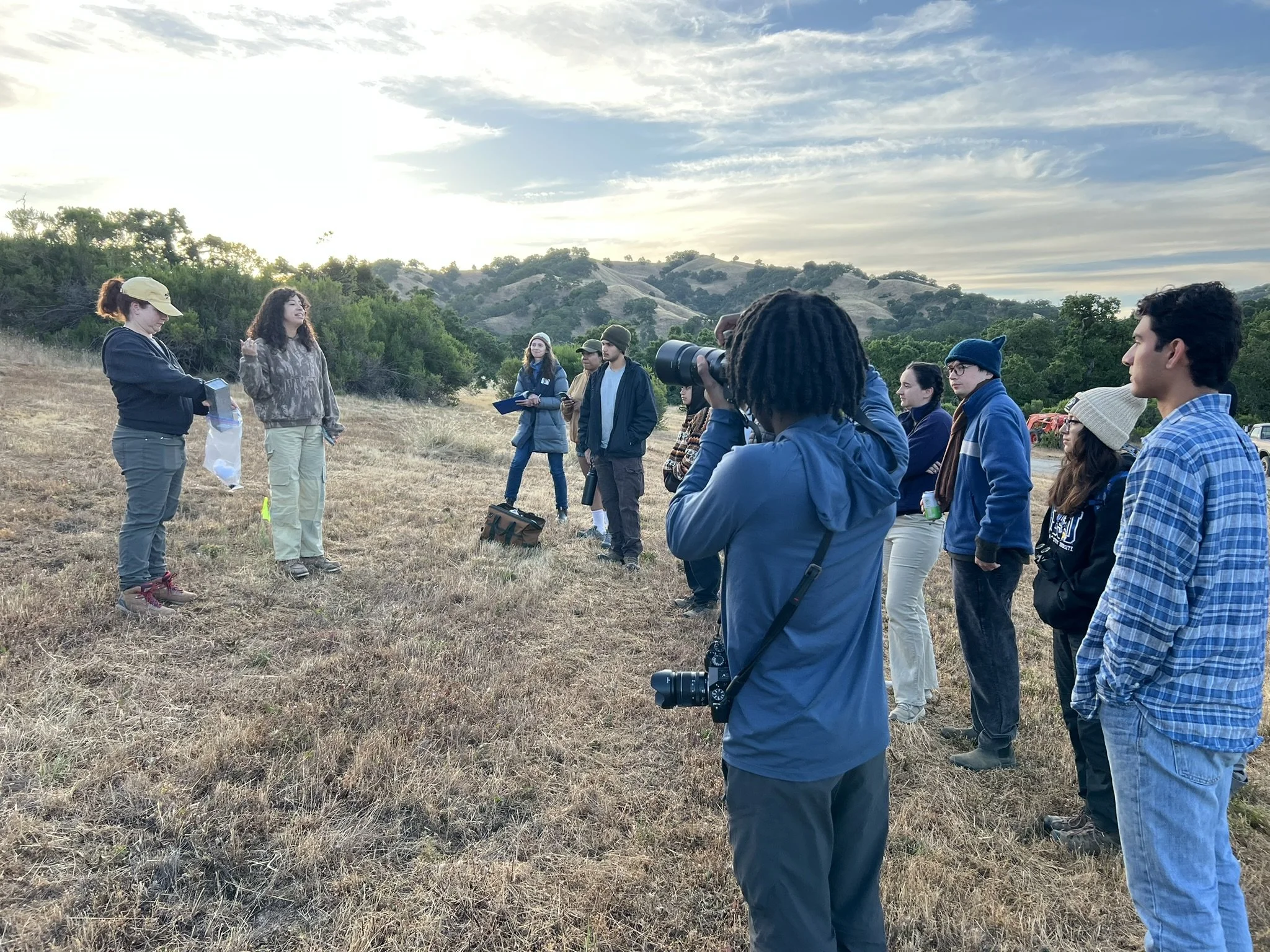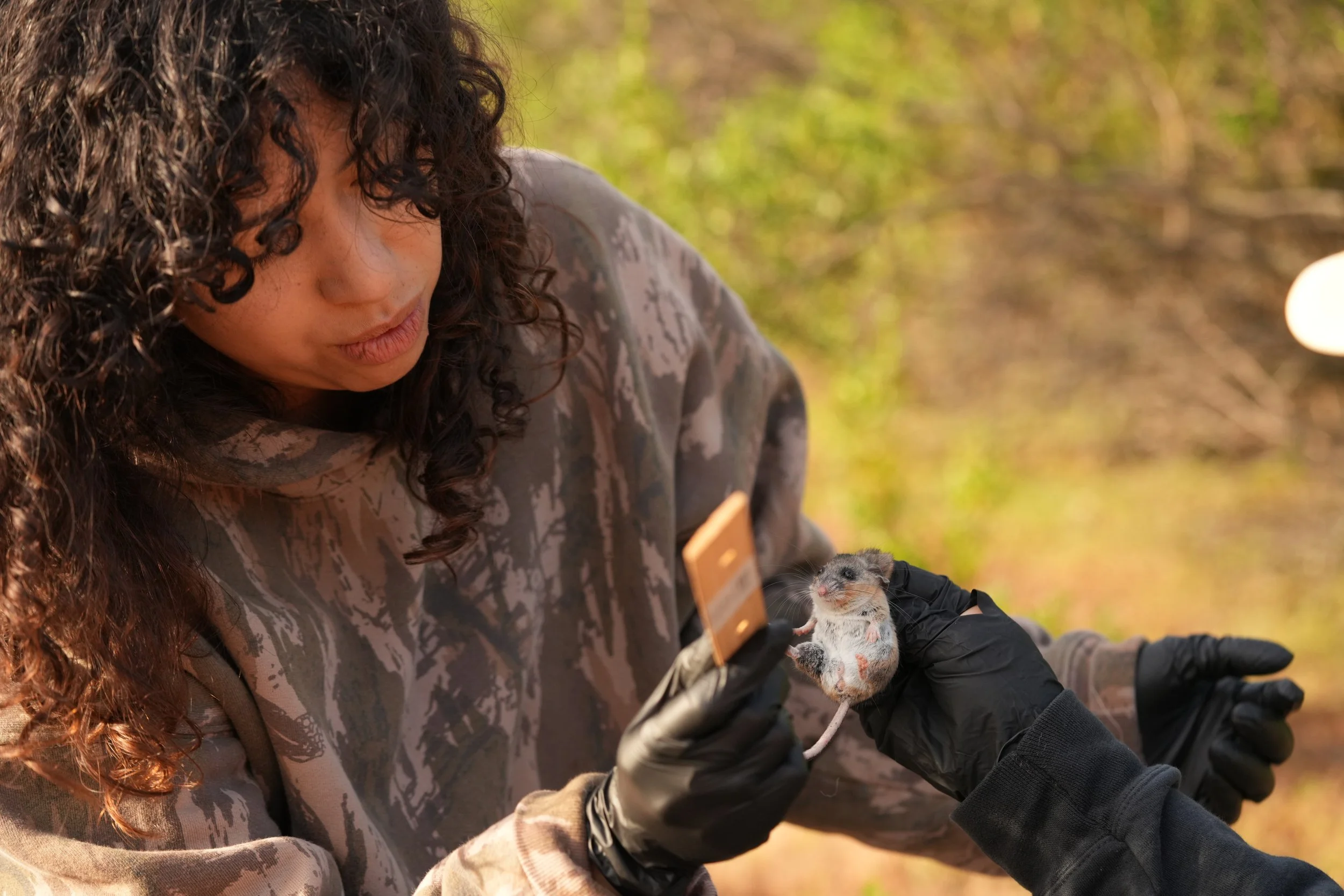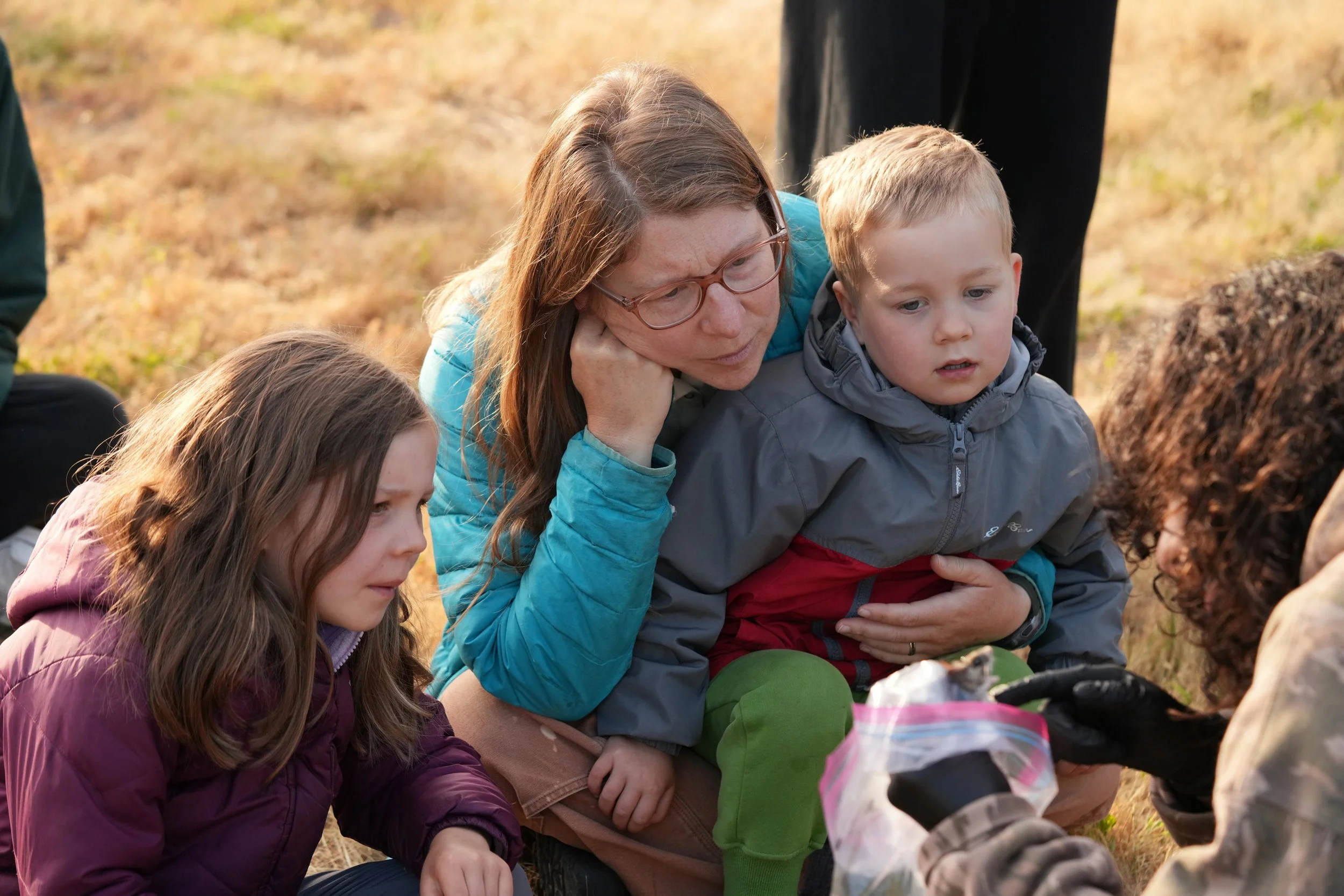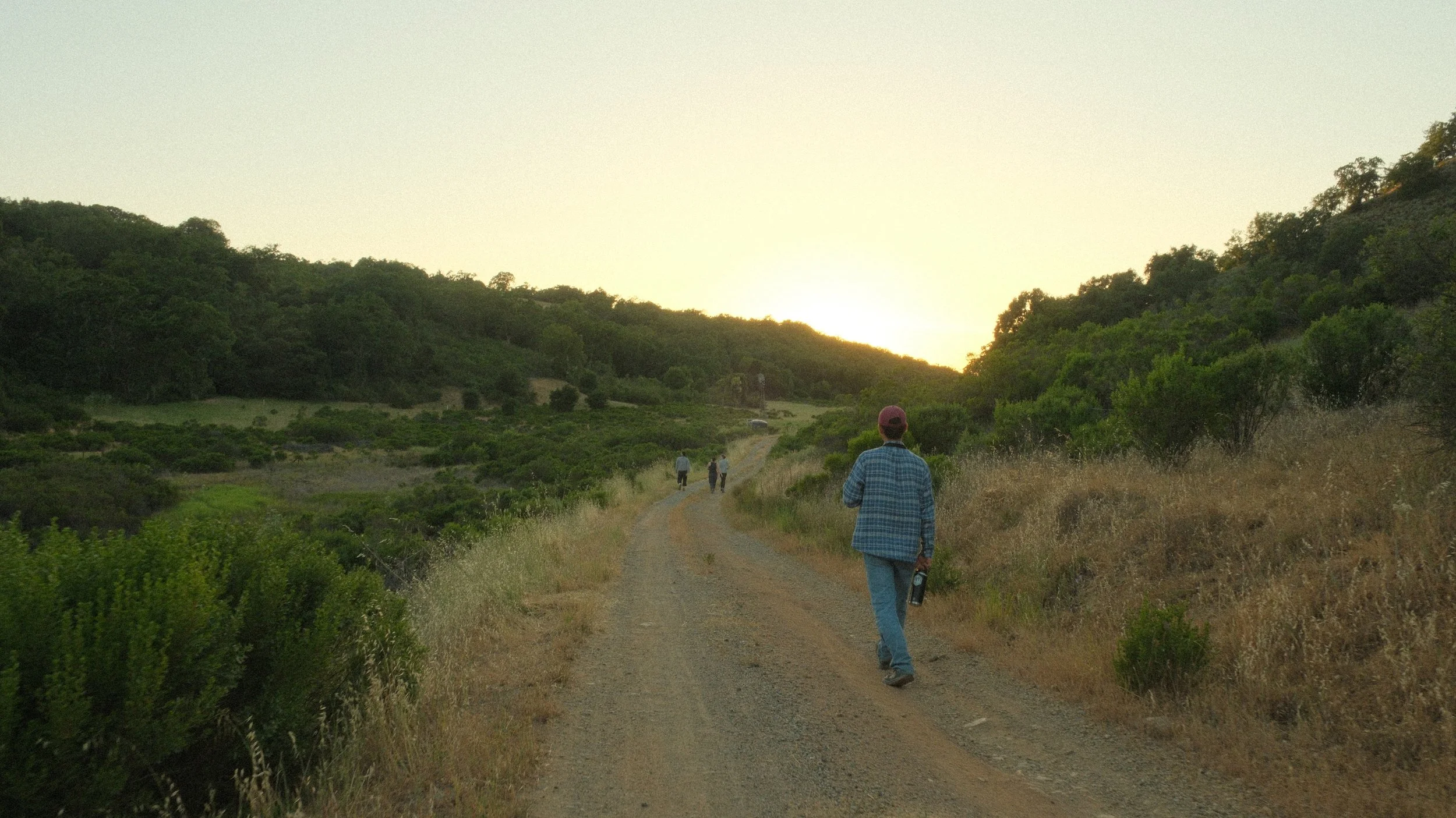
May 30 - June 1, 2025
by Esther Cole Adelsheim
SOAR Weekend Intensive
The inaugural SOAR multi-institutional field course launched this spring at the beautiful Blue Oak Ranch Reserve, with generous support from our network partners and a grant from Stanford University’s Office of Community Engagement. We were joined by three students from each of the participating Bay Area institutions: West Valley College, UC Santa Cruz, Stanford University, Santa Clara University, and San Jose State University. The mini-course curriculum featured several aspects of the SOAR educational arc: engagement, field activities, experiencing a field station, and data analysis. Building awareness for the spectrum of jobs in environmental fields, and the skills required, were central in mini-course design.
Friday started with a students and instructor drive from their home institutions arriving at the reserve by the afternoon. Once there, students were invited to consider place, human interactions with our environment, and shape expectations of how our newly found community will interact with one another over the weekend. After dinner and an evening walk, students and field course instructors alike settled into their tents and dorms – their home away from home for the duration of the weekend.
At sunrise, we gathered to see what surprises and delights could be caught through binoculars and by mist nests set alongside the barn where we stumbled in to gather coffee and snacks.
A California thrasher grumpily gazed at us, its captors, and a pair of quails graciously endured our admiring gazes.
“First I was nervous about being in the field because this was my first field experience, but by the end I was a lot more comfortable in the field (especially after witnessing and being part of techniques) and excited to have similar experiences in the future! Seeing field methods with my own eyes helped me think more deeply about how important they are for a wide range of environmental careers.” —Student Participant
After stomachs full of food, we were grounded in the tools used to help us better understand plants and imagine how we might come to understand them better.
A professor helped us consider how numbers can tell stories about the way living beings interact with one another.
Heat grew, but shade and cool drinks supported thoughtful and personal reflections about our professional journeys and how we find meaning and purpose through our vocational and avocational lives.
“It made me feel inspired, motivated, over-joyed (it was so fun), more well networked, and grounded. I felt like I could be myself. I felt more connected to my peers and colleagues. Most of all, I felt like I was somewhere I belonged.” —Student Participant
“I loved it. I felt like mostly everyone was super welcoming, especially because I had literally 0 experience with ecology going into this. My confidence increased a lot post SOAR, which, as someone applying for jobs, is super meaningful.”
—Student Participant
Morning came too soon, but with it a new set of surprise delights – furry creatures! We learned how to trap small mammals and appreciate the terror and comfort that is ever-present in their home environments.
After gathering for breakfast, packing up lunches, we paid one last stop to look at the amphibians and reptiles that take advantage of the small pond and warm sunny basking areas on our way home.
We also paused to reflect on where we’ve been and what we anticipate down the road.
Our experience over the weekend and student testimonials showed us how effective the setting was to foster networking and building confidence in students, which is the culminating step for students as they progress through the SOAR educational arc.
“I now know with perseverance and commitment I can continue on this career path that I feel genuinely connected too. Thank you for an amazing weekend.”
—Student Participant
“I also felt more empowered to make choices for my future.”
—Student Participant
Esther Cole Adelsheim is an ecologist that uses applied science and adaptive management for environmental conservation. She is a Conservation Program Manager at Stanford University.
